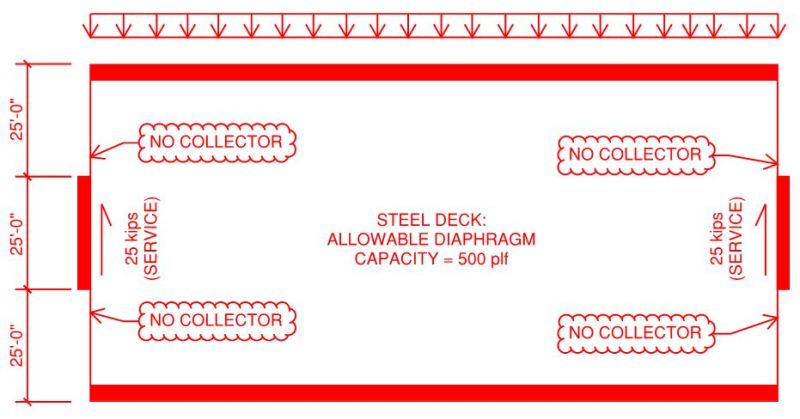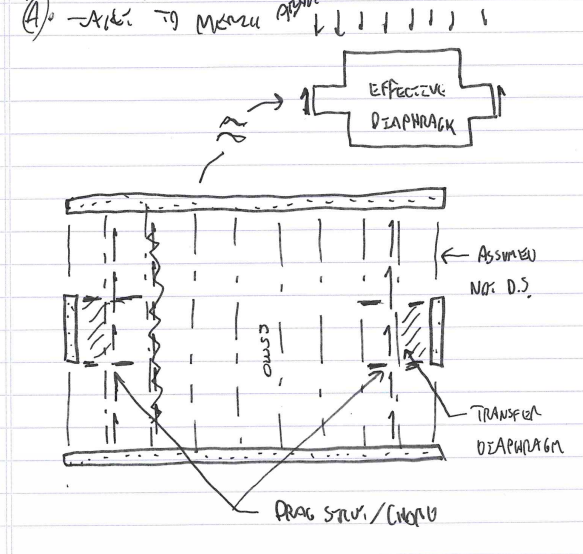I have a project in which I am designing precast concrete shear walls for loads given by an EOR. The only attachment of roof deck to walls is with a ledger angle at the wall only. No other collectors or drag struts are provided. I've created a simplified illustration for discussion purposes. The building is low seismic SDC "B"
The load the EOR has provided, divided by the length of wall (ledger angle) put the deck shear at double the allowable shear capacity (25000#/25ft = 1000plf >> 500plf NG!). I've been presented with the argument that the deck shear is actually the shear wall load divided by the total depth of the roof deck and the individual fasteners of deck to ledger can take the load, thus it is fine (25000#/75ft = 333plf < 500plf OK).
I have my opinion... what are your thoughts?

The load the EOR has provided, divided by the length of wall (ledger angle) put the deck shear at double the allowable shear capacity (25000#/25ft = 1000plf >> 500plf NG!). I've been presented with the argument that the deck shear is actually the shear wall load divided by the total depth of the roof deck and the individual fasteners of deck to ledger can take the load, thus it is fine (25000#/75ft = 333plf < 500plf OK).
I have my opinion... what are your thoughts?


